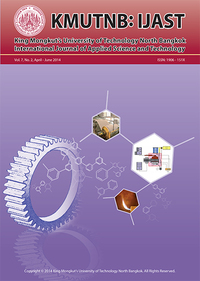Efficient Energy Conversion of Wastes and Fuels in Power Systems
Main Article Content
Abstract
Efficient fossil energy use with low pollution in all kinds of power plants is of growing interest in all industrial sectors.
The use of energy is growing steadily by many countries worldwide due to the greater desire for enhancing better
standards of living and to increase productivity. Efficient energy use is favorable for better productivity product quality,
costs, and quality of human life but the energy use adversely impacts our environment. During the past decade energy
demands from China and India have grown significantly and is projected to grow even more in the coming decades as
they enhance their living standards and productivity. This clearly requires close examination of the available methods
of fossil fuel energy conversion as well as advanced methods that will provide increased efficiency and pollution
reduction. This section, after brief review on historical perspectives on energy conversion, provides a short review
on the various methods used for energy conversion in industrial power plants as well as new innovative methods that
are now beginning to become available with significant fuel saving, compact size of the equipment and low pollution.
As an example, high temperature air combustion technology has seen wider acceptance of the technology in many
kinds of industrial furnaces, in particular, for use in steel industry and fuel reforming furnaces with demonstrated
energy savings of about 30% (on the average), about 25% reduction in the size of the equipment (compact size),
about 50% reduction in low pollution and better quality of the product produced. Such significant energy savings
were only dream of engineers in the past. This technology has been adapted by many countries worldwide. In addition
advanced technologies are developed or being developed for use with coals (and solid fuels) since its cost based on
energy content is low as compared to gaseous fuels, such as natural gas. Several commonly used methods in power
generation are presented along with integrated and hybrid systems for increased efficiency. Clear representation is
provided of the output energy available from known input energy. Some energy conversion techniques provide in-situ
capture of pollutants while others must use air pollution control devices for pollution capture and/or pollution reduction
prior to waste gases discharge to the atmosphere. The information provides quick guide on the commonly used methods
of energy conversion in the USA and Europe, in particular when using solid fuels, such as coal. It is expected that
future systems will be more energy efficient and emit even lower pollution via the use of combined cycle systems
and integrated energy conversion systems. Advanced high temperature steam gasification results in hydrogen-rich
syngas of higher heating value, reduced volume of the waste, and the remaining residue is clean and non-leachable.


